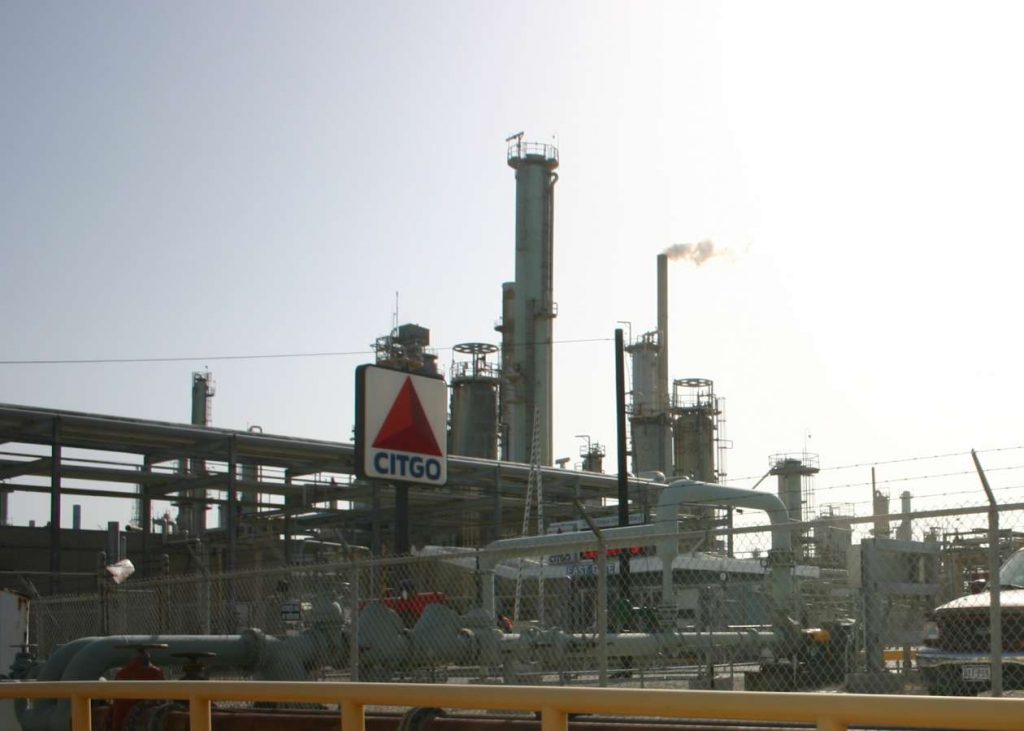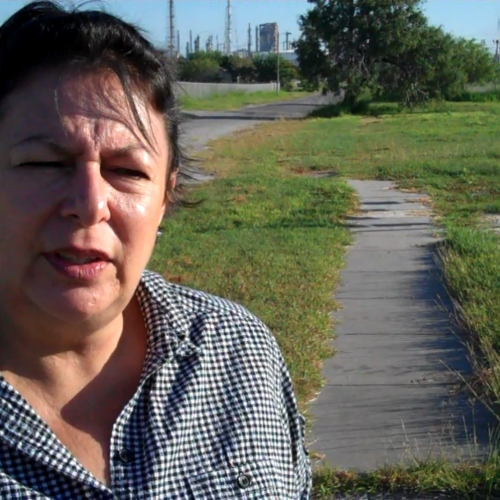Introduction
Almost four years ago, a federal jury convicted Citgo Petroleum Corp. of two criminal violations of the Clean Air Act, having found that the company’s refinery in Corpus Christi, Texas, afflicted a nearby community with toxic air pollution.
For nearly a decade, the jury found, emissions of benzene and other hazardous chemicals — from two hulking, uncovered tanks — regularly swept into a mostly poor, minority neighborhood known as Hillcrest.
That was in June 2007. To the dismay of the refinery’s neighbors, Citgo still hasn’t been sentenced — a delay legal scholars say is unusual. A Citgo lawyer blames federal prosecutors for the delay.
The judge in the case recently held that the residents — who blamed a variety of health problems on the tank emissions — didn’t qualify as crime victims because the government failed to prove their ailments were directly tied to the pollution.
Some in Hillcrest wonder when, or if, Citgo will ever be punished.
“They should have been sentenced a long time ago,” said Jean Salone, 70, who has lived a few blocks from the refinery since 1962.
Salone, a witness in the 2007 trial, said that odors from the open-top tanks at times were overpowering. “One time I was in a dead sleep, and the smell came into my house and woke me up,” she said.
The occupants of Hillcrest’s 300 or so homes have had a range of conditions, from cancer to asthma, Salone said. A state environmental inspector who visited the neighborhood is among those who fell ill. Yet the judge in the case has ruled that residents’ symptoms have many potential causes besides exposure to chemicals from the Citgo tanks.
David Uhlmann, former chief of the Justice Department’s Environmental Crimes Section, said the lag time from Citgo’s conviction to sentencing is “highly unusual. It’s hard to justify a four-year sentencing delay, no matter how complex the post-trial issues have been.
“There’s an old saying: Justice delayed is justice denied. The government, as a representative of the people, deserves to have the case heard and decided in an expeditious manner. The community affected certainly deserves to have the case decided in a timely manner, as does the defendant.”
Defendants in most cases are sentenced within a year of conviction, said Ulhmann, a professor at the University of Michigan Law School.
Jane F. Barrett, a former federal prosecutor and defense lawyer who now directs the Environmental Law Clinic at the University of Maryland, said the issue of whether Hillcrest residents are crime victims “should not be a basis for delaying sentencing four years. It’s kind of unfathomable to me what’s taking so long.”
Dick DeGuerin, one of five lawyers representing Citgo in the case, insisted that the company “has not done anything to delay the [sentencing] hearing. Most of the delay has been caused by the government’s claims of health effects on behalf of the residents of the neighborhood.”
Justice Department officials disagree, saying that the court heard testimony from the residents three years ago and that prosecutors pressed for a firm sentencing date in June 2010.
The people of Hillcrest, meanwhile, are left to wonder where they stand. DeGuerin said that he expects sentencing to take place this spring or summer but that, in any event, Citgo plans to appeal. The company faces a fine of $500,000 per count — a total of $1 million — or twice the gross economic gain it realized by illegally operating the tanks, whichever is greater. Given that the violations went on for nearly 10 years, this amount could run into many millions of dollars. Citgo could also face five years’ probation.
The Citgo refinery lies at the eastern end of Refinery Row, a 10-mile string of industrial plants between Interstate 37 and the Corpus Christi Ship Channel. In July 2009, an explosion at Citgo badly burned a worker and released a potentially lethal chemical called hydrofluoric acid, used to make high-octane gasoline. Citgo told state regulators that only 30 pounds of the acid, known as HF, left plant boundaries, but investigators with the U.S. Chemical Safety Board concluded that the total was closer to 4,000 pounds. Hillcrest residents complained that they were not properly notified about the event.
An iWatch News-ABC News investigation found that a worst-case HF release from the refinery could travel up to 15 miles, putting some 220,000 people at risk of injury or death.
Citgo, one of the nation’s largest refiners, is owned by Petróleos de Venezuela, S.A., (PDVSA), the national oil company in Hugo Chávez’s Venezuela

Investigator had “conclusive” exposure, U.S. says
The key issue in the 2007 criminal trial was whether Citgo had innocently operated the two tanks as “wastewater equalization tanks,” for which roofs are not required, between 1994 and 2004, or illegally operated them as “oil-water separators,” which must be topped by either fixed or floating roofs to contain air emissions. The jury in Corpus Christi sided with the prosecution on two of four felony counts, finding that Citgo had broken the law by not putting emission control equipment on the tanks, one of which was found to hold a 10-foot layer of oil during a surprise state inspection. The inspection revealed that the two tanks contained 4.5 million gallons of oil.
On the day it was convicted — June 27, 2007 — Citgo asserted in a press release that something bigger was at stake than the finding of guilt or the prospective size of its penalty. “The regulations under which Citgo was charged had never been used before in a criminal prosecution,” the company said, adding that it had voluntarily put roofs on the tanks in 2004.
In post-trial hearings, much of the legal debate centered on whether some 100 Hillcrest residents identified by the government as crime victims qualified as such under the federal Crime Victims’ Rights Act and could testify at Citgo’s sentencing. The hearings were held over several months during the first half of 2008. It took almost three years for U.S. District Judge John D. Rainey to decide the matter. On April 5 of this year, the judge ruled that prosecutors had not proven emissions from the two tanks were the “specific cause of the alleged victims’ health conditions,” which included burning eyes, shortness of breath, vomiting and dizziness.
“Such common symptoms have many potential causes — such as allergies, bacteria, viruses, or chemical exposure — some of which are difficult to prove,” the judge wrote. “Also, many of the alleged victims have various medical conditions, and a number admitted to smoking cigarettes.”
In a motion for reconsideration filed April 19, the Justice Department argued that medical records showed the residents “had, in fact, complained of certain symptoms that were consistent with expected symptoms of chemical exposure … The United States also respectfully rejects the suggestion that because a human being is elderly or smokes cigarettes, they cannot be exposed to chemical emissions and suffer immediate health effects as a direct result of chemical exposure.”
The motion notes that Dorothy Daywood, an investigator with the Texas Commission on Environmental Quality, fell ill while investigating a Hillcrest resident’s odor complaint in November 1996. At a 2008 hearing, Daywood testified that she felt dizzy and nauseous and developed a headache while talking to the resident. Daywood said she went on to Citgo, where an employee took her to the source of the odor — the two uncovered tanks, known as tanks 116 and 117. “The temporal connection between the acute health effects suffered by [the resident] and Ms. Daywood and exposure to the emissions from tanks 116 and 117 is conclusive,” the government’s motion states.
Uhlmann, the former Justice Department section chief, acknowledged that “some judges are reluctant to identify communities as victims of crime because it tremendously complicates sentencing proceedings.” Still, to insist that specific health problems be tied to the tank emissions “strikes me as too high a burden to impose on a community like this,” Uhlmann said. “There’s no question that they’ve been exposed to unlawful pollution. The violations occurred in this community. The air was polluted in this community. The community should have the opportunity to be heard.”
The judge’s rejection of the government’s claim that Citgo’s neighbors should be treated as crime victims has stirred strong emotions in Hillcrest.
“He’s saying that violating the Clean Air Act is a victimless crime, and that is hogwash,” said Suzie Canales, executive director of Citizens for Environmental Justice, a local group that has advocated for residents of the neighborhood. “You cannot have guilty verdicts on Clean Air Act violations and say nobody was impacted.”
DeGuerin, the Citgo lawyer, said the ultimate solution may be a local or state government buyout of property owners. “It’s not pleasant to live close to a refinery,” he said. Hillcrest “really should be declared an industrial zone.”
Salone, however, doubts that a wholesale buyout will ever take place. Some years ago, she said, Citgo “bought out two blocks and called it a buffer zone. How in the world can two blocks be a buffer zone?” One resident who took a buyout received only $35,000, Salone said — not enough to relocate to a decent place.


Join the conversation
Show Comments